Greek Myth: Theseus vs Centaur in Stunning Sculpture
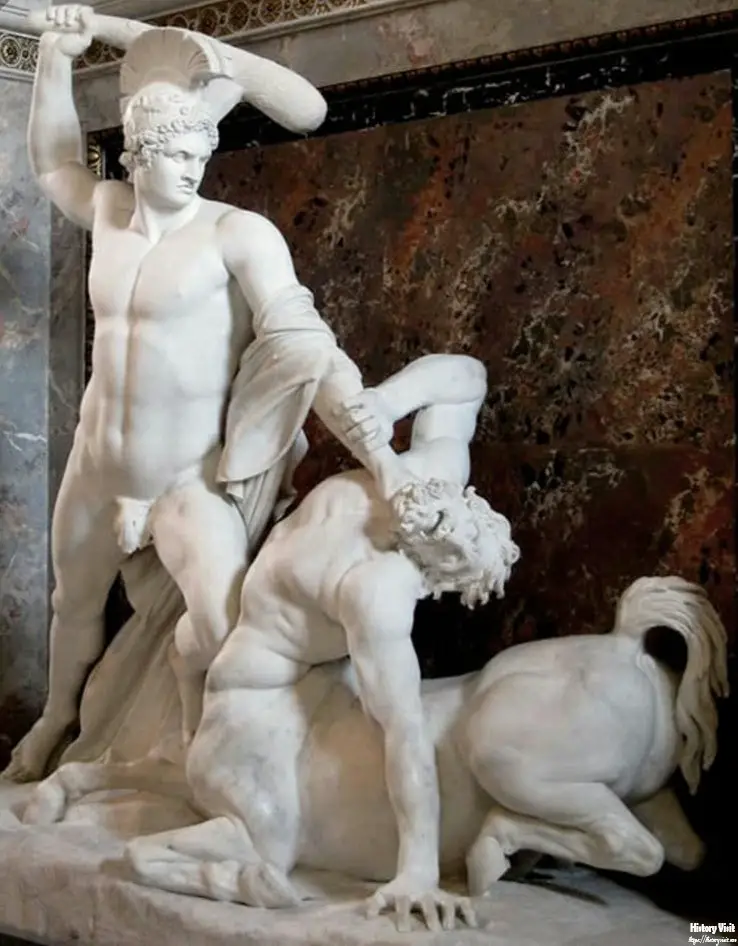
Introduction
The sculpture “Theseus and Centaur” by Antonio Canova, created in 1805. It is a remarkable representation of a famous Greek myth. This masterpiece captures the heroic victory of Theseus over a centaur. It is blending mythological storytelling with exquisite artistry. The sculpture not only reflects Canova’s mastery but also immortalizes the epic tale from Greek mythology. This article delves into the background of the sculpture, the myth it depicts, and its significance in art and history.
The legacy of Antonio Canova as a neoclassical sculptor is deeply intertwined with his ability to bring ancient Greek myths to life. His works often reflect the values and aesthetics of the classical world, providing a bridge between ancient and modern art. “Theseus and Centaur” stands out as a prime example of his skill and vision.
In exploring this sculpture, we will examine the myth of Theseus and the centaur, the artistic elements of the sculpture, and its place in the broader context of Greek myth-inspired art. By understanding these aspects, we can appreciate both the mythological and artistic significance of Canova’s creation.
The Greek Myth of Theseus and the Centaur
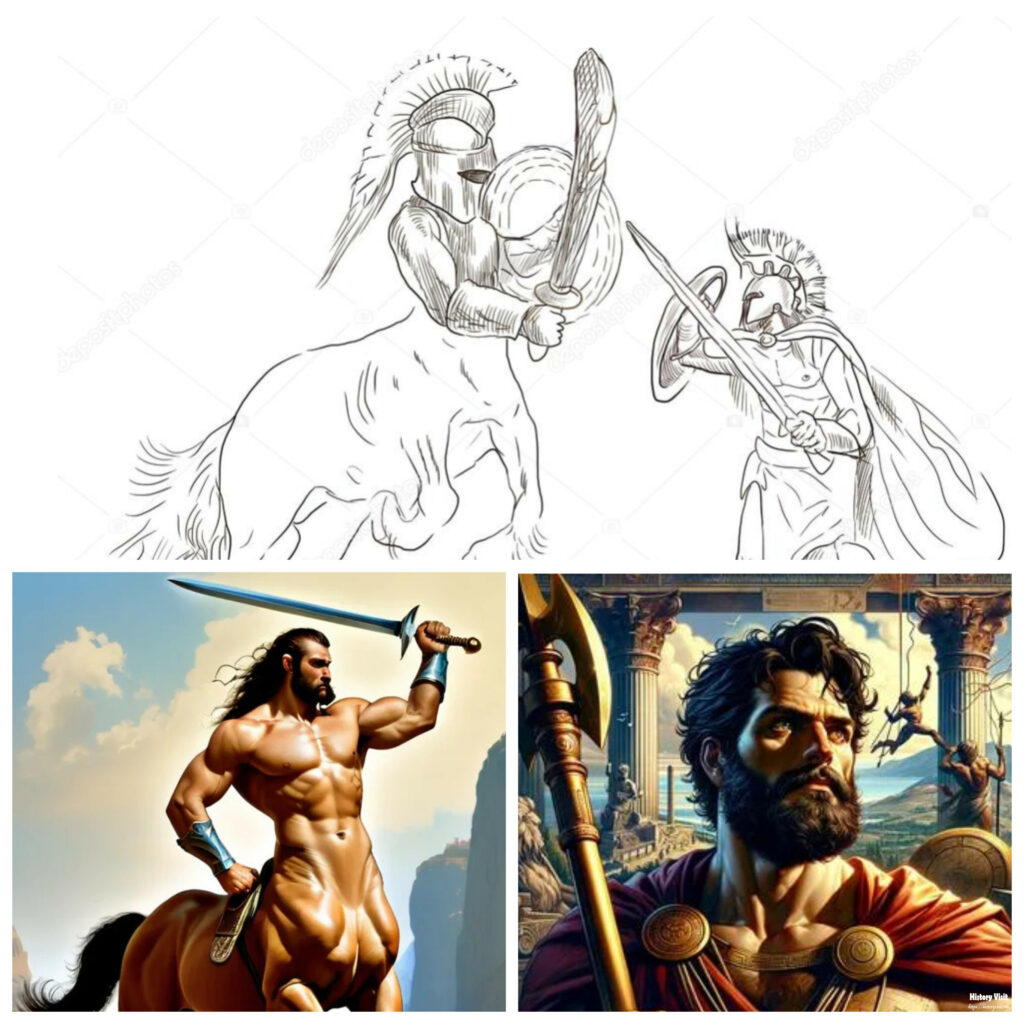
The myth of Theseus and the centaur originates from the legendary tales of Greek mythology. Theseus, a hero known for his strength and intelligence, is celebrated for his numerous adventures and feats. One of his notable encounters was with the centaurs, a group of creatures that were half-human, half-horse, known for their wild and unruly nature.
The most famous conflict involving Theseus and the centaurs occurred at the wedding of Pirithous, the king of the Lapiths and a close friend of Theseus. The centaurs, invited as guests, became intoxicated and attempted to abduct the bride, Hippodamia, and other female guests. This led to a violent battle between the Lapiths and the centaurs, known as the Centauromachy.
In the chaos, Theseus played a pivotal role in defending the Lapiths and subduing the centaurs. His bravery and combat skills were crucial in securing victory. This episode highlights Theseus’s heroism and the recurring theme of the struggle between civilization and barbarism in Greek myth.
Antonio Canova’s sculpture captures the moment of Theseus’s triumph over the centaur, symbolizing the victory of order over chaos. The myth and its representation in art emphasize the moral and cultural values of ancient Greece, where heroes like Theseus were revered for their virtues and deeds.
Canova’s Artistic Vision
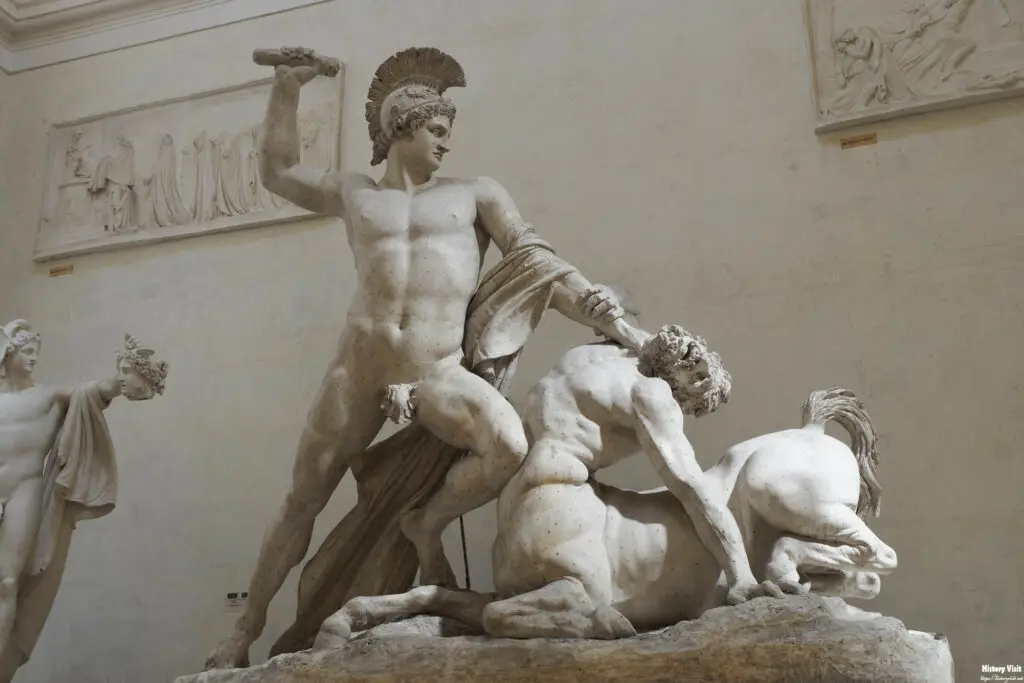
Antonio Canova’s “Theseus and Centaur” exemplifies his neoclassical style, characterized by its adherence to classical forms and themes. Canova was deeply inspired by the art and culture of ancient Greece and Rome. His works often reflect the ideals of beauty, harmony, and proportion that were central to classical art.
In creating this sculpture, Canova aimed to capture the dynamic struggle between Theseus and the centaur. The composition is meticulously designed to convey movement and tension. Theseus, depicted in a powerful stance, exudes strength and determination as he overpowers the centaur. The centaur, on the other hand, is shown in a moment of defeat, embodying the untamed and chaotic nature that Theseus sought to subdue.
Canova’s attention to detail is evident in the anatomical precision and expressive features of both figures. The musculature and posture of Theseus highlight his heroism, while the anguished expression of the centaur conveys the intensity of the conflict. This contrast between the two figures enhances the dramatic impact of the sculpture.
The choice of marble as the medium further underscores the neoclassical aesthetic. Marble was favored by classical sculptors for its durability and ability to capture fine details. Canova’s mastery of this medium allows him to achieve a level of realism and refinement that brings the mythological scene to life.
Symbolism and Interpretation
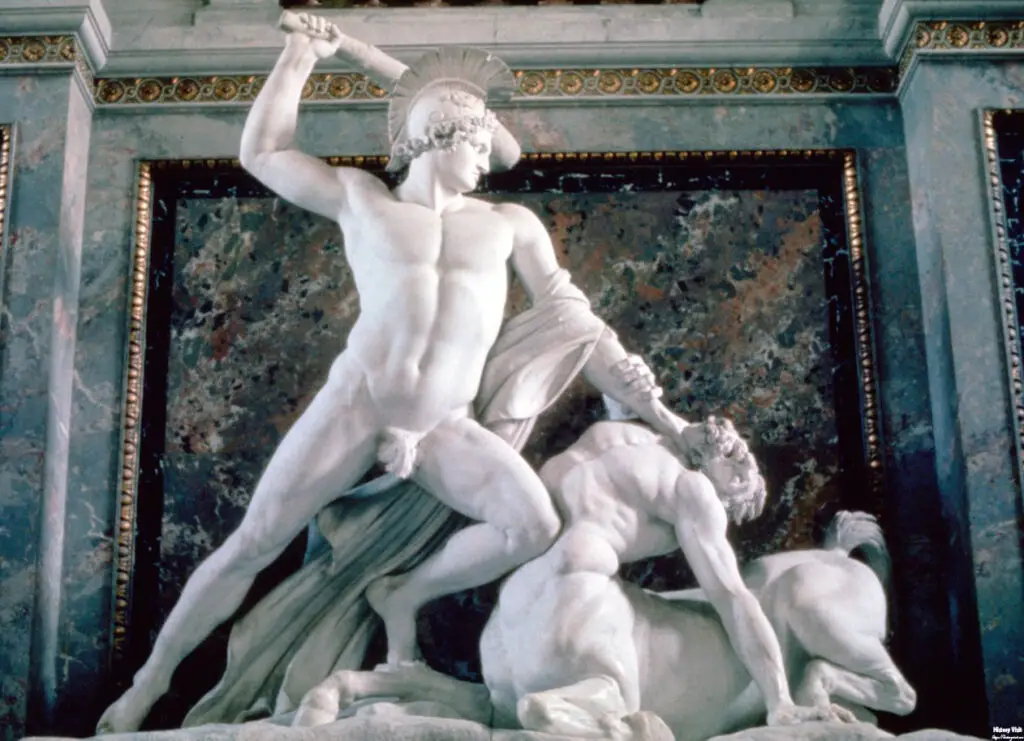
“Theseus and Centaur” is rich in symbolic meaning, drawing from the themes and values of Greek mythology. The battle between Theseus and the centaur represents the eternal struggle between civilization and barbarism, order and chaos. Theseus, as a hero, embodies the virtues of bravery, strength, and wisdom, which are essential for maintaining harmony and justice.
The centaur, a creature of dual nature, symbolizes the untamed and primal forces that threaten societal order. By defeating the centaur, Theseus asserts the dominance of human rationality and moral integrity over base instincts and savagery. This victory is not just a physical triumph but a moral and cultural one, reinforcing the ideals that were central to ancient Greek society.
Canova’s sculpture also invites viewers to reflect on the nature of heroism and the qualities that define a true hero. Theseus’s actions are driven by a sense of duty and honor, rather than personal gain. His willingness to confront danger and protect others exemplifies the heroic ethos celebrated in Greek myth.
Moreover, the sculpture can be seen as a commentary on the role of art in preserving and transmitting cultural values. By choosing to depict this particular myth, Canova aligns himself with the classical tradition of using art to convey moral lessons and inspire viewers. “Theseus and Centaur” thus serves as a testament to the enduring relevance of Greek mythology in the neoclassical era and beyond.
The Legacy of The Greek Myth “Theseus and Centaur”
Antonio Canova’s “Theseus and Centaur” has left a lasting impact on the world of art. Also continues to be admired for its technical mastery and thematic depth. The sculpture is a quintessential example of neoclassical art, which sought to revive and celebrate the ideals of classical antiquity.
The influence of this work extends beyond its immediate aesthetic appeal. It has inspired subsequent generations of artists to explore classical themes and incorporate mythological narratives into their own creations. The sculpture’s emphasis on harmony, proportion, and expressive detail has set a standard for excellence in figurative art.
“Theseus and Centaur” also plays a significant role in the broader context of Greek myth-inspired art. By depicting a pivotal moment from Greek mythology, Canova contributes to the rich tradition of storytelling through visual art. His interpretation of the myth adds a layer of depth and nuance, encouraging viewers to engage with the underlying themes and moral lessons.
Furthermore, the sculpture highlights the enduring appeal of Greek mythology as a source of artistic inspiration. The tales of heroes, gods, and mythical creatures continue to captivate audiences and provide fertile ground for creative exploration. Canova’s work stands as a reminder of the timeless nature of these stories and their ability to resonate across different eras and cultures.
Conclusion
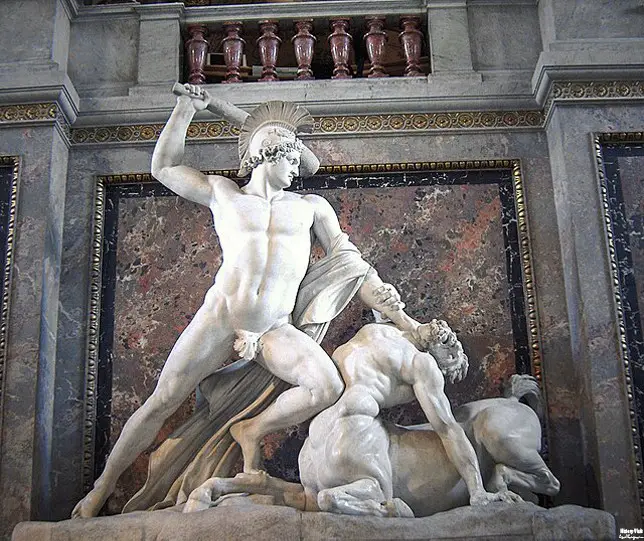
“Theseus and Centaur” by Antonio Canova is a masterful representation of a classic Greek myth, capturing the heroism and moral struggle at the heart of the tale. The sculpture exemplifies Canova’s neoclassical style and his ability to bring ancient myths to life through his artistry. By delving into the myth, artistic elements, and symbolism of the sculpture, we gain a deeper appreciation for both the mythological narrative and Canova’s creative vision.
The legacy of “Theseus and Centaur” extends beyond its artistic excellence, serving as a testament to the enduring relevance of Greek mythology in the world of art. Canova’s work continues to inspire and captivate, reminding us of the timeless values and themes that these ancient stories embody.
In celebrating this masterpiece, we also celebrate the rich tradition of Greek myth-inspired art. Its ability to convey profound moral and cultural lessons. “Theseus and Centaur” stands as a powerful reminder of the heroism and virtues. It is define the human experience. Also the transformative power of art to preserve and elevate these ideals for future generations.


